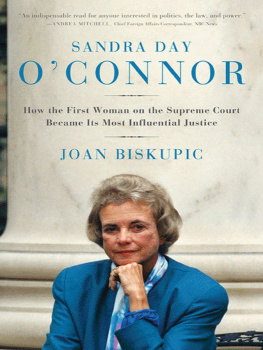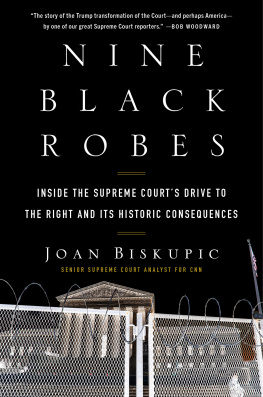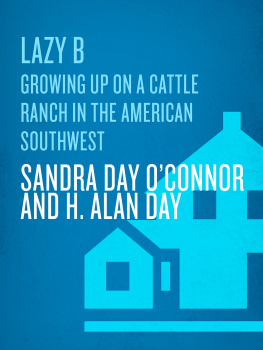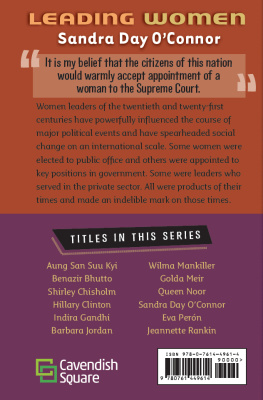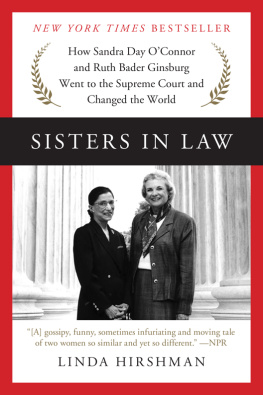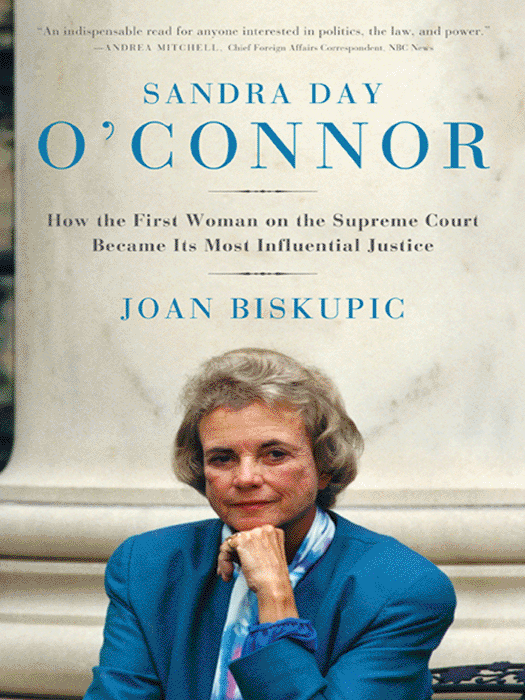As you will recall, Sandra forced my hand by threatening to lead the revolution.
A s Sandra Day OConnor celebrated her st birthday in suburban Phoenix on Thursday, March , 1981 , Supreme Court Justice Potter Stewart and Attorney General William French Smith spoke confidentially in the solarium of Stewarts home in the lush Palisades neighborhood of northwest Washington, DC.
The private meeting had been arranged by Stewarts old friend George H. W. Bush, then the vice president. Appointed to the bench by President Eisenhower, Stewart had decided to retire in June, at age , at the end of the Courts term. To give President Ronald Reagan time to pick a successor, Stewart needed to inform Smith now. But he wanted his decision kept quiet until June.
The next day, Smith asked an assistant to begin research on a list of potential Supreme Court nominees. Without mentioning his conversation with Stewart, Smith said the office should prepare for the possibility of a vacancy occurring in the summer. It had been six years since the last Supreme Court appointment, and all but two of the justices were over , so Smiths request was not extraordinary. Working with White House counsel Fred Fielding, Smith already had begun an informal short list of possible nominees. Smith scrawled his names on a pink telephone message slip in his office.
Whos OConnor? asked the assistant, Ken Starr, when Smith handed him the slip. All youve got here is a last name.
Thats Sandra Day OConnor, Smith said. Shes an appeals court judge in Arizona. Smith knew little more about her, only that her name had been passed on by at least one person in his circle. A few other womens names made the list, along with a couple of men, including Robert Bork, a Yale University law professor and former U.S. solicitor general, a favorite of political conservatives.
Smith planned to inform President Reagan early the next week that he would soon have an appointment to make to the nations highest court. But before Smith could arrange a private conversation, fate intervened. On Monday, March , Reagan was shot and wounded as he was leaving the Washington Hilton after a speech. The bullet hit the president under his left arm, narrowly missed a vital artery, and lodged in his left lung. Secret Service agents rushed him to a hospital, where he underwent emergency surgery.
Reagan returned to the White House living quarters two weeks later, but it was not until April , nearly a month after Smiths conversation with Justice Stewart, that the attorney general thought the president was sufficiently recovered to hear of the impending Court vacancy. A longtime Reagan confidant distinguished by his silver hair and year-round tan, Smith disclosed the news as the two men talked in the presidents private study on the third floor of the White House. As a candidate in 1980 , Reagan had promised the nation a woman justice, and now he told Smith of his preference for a female nominee.
Smith said that a search was already underway and that women were included on the list.
OConnors credentials did not make her an obvious candidate. She was not on a federal court or top state court, as many nominees in the recent past had been. Instead, she was a judge on a state intermediate court handling criminal and civil appeals. But she was also a former state senator with deep and well-maintained political connections to the Republican Party. In the fall of 1971 , she had created a vast network to advance the Supreme Court nomination of William Rehnquist, her old Stanford Law School classmate. She had then become cochairman of Richard Nixons 1972 reelection campaign in Arizona. She was also old friends with senator Barry Goldwater, an early apostle of the conservatism that Reagan had since brought to Washington. Strengthening her hand considerably was a bond she had developed with Chief Justice Warren
OConnor also stood out at a time when women, especially Republican women, were a rarity on state and federal courts. When Stewart announced his retirement on June , news reporters immediately focused on the few women judges with Republican connections, such as Cornelia Kennedy, a judge on the U.S. Court of Appeals for the Sixth Circuit, and Joan Dempsey Klein, a judge on the Los Angeles Superior Court.
Starr, then and Smiths chief lieutenant in screening the backgrounds of potential nominees, reviewed OConnors court rulings. The son of a Texas minister, Starr had gone to Duke Law School and landed a plum job as a law clerk to Chief Justice Burger, before settling into practice with Smith at the Los Angeles law firm of Gibson, Dunn and Crutcher. Starr then followed Smith into the Reagan administration.
The research on OConnor in Arizona fell to another Justice Department lawyer, F. Henry Hank Habicht, a -year-old native of suburban Chicago. He flew to Phoenix to look up legislation OConnor had sponsored and to interview her former colleagues in the Arizona legislature. Wearing a jacket and tie in defiance of the broiling Arizona sun, the Midwesterner did not go unnoticed, and word of Habichts visit soon reached OConnor.
At the White House, the idea of a female nominee was gaining momentum, although who that would be was still an open question. I think it is imperative that you appoint a woman to the Supreme Court, wrote Lyn Nofziger, Reagans longtime political advisor who served as liaison to conservative groups. It means you will live up to a commitment you made and have that behind you. It will go a long way toward solving the problem we have with the lack of women in this administration in high places. It will take off your back the impression, however unjustified, that you and your senior staffers are anti-women. The Reagan cabinet had no women, although the administrations most prominent female appointee, Jeane Kirkpatrick, U.S. ambassador to the United Nations, had cabinet status. As Nofziger and other Reagan advisors saw it, the search for a candidate was about politics as much as it was about legal qualificationsnot a new development in Supreme Court selection.
The next day, on June , Smith briefed Reagan on the leading candidates. The president was interested in OConnor. Her childhood on the Lazy B ranch intrigued the man who had adopted California as his home, rode horses, and chopped wood for exercise. For Reaganthe self-styled nontraditional politicianOConnors turn as a legislator and her relative lack of judicial experience made her more attractive than conventional nominees.
Another major asset was that she appeared to have sidestepped the political traps of the day: abortion and the Equal Rights Amendment. She had worked for womens rights, but not in the hard-line way that defined the more vocal elements of the movement. I come to you tonight wearing my bra and my wedding ring, she used to tell local audiences. She had stuck with dresses and pearls as her female contemporaries moved into pantsuits.
Two days later, on June , Smith called OConnor for the first time. She had heard that the Justice Department was nosing around, so the call was not entirely unexpected. But the timing was inopportune: she was recuperating from a hysterectomy. Smith told her that she was being considered for a federal position. She knew Smiths background at the law firm of Gibson, Dunn and Crutcher, and she immediately kidded, It must be a secretarial position, is it not? This remark alluded to an episode OConnor had never forgotten: after she had graduated from Stanford Law School in 1952 , his Los Angeles law firm offered her only a legal-secretary job. But on this June 1981 day, Smith ignored the allusion and told OConnor that Starr and another aide would be flying out to interview her in two days. They wanted to meet at her house rather than a public place, so that they could keep the process confidential.

